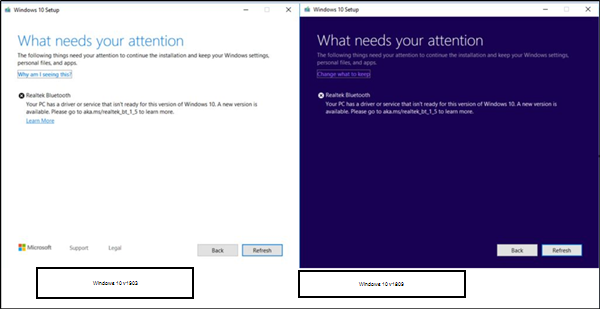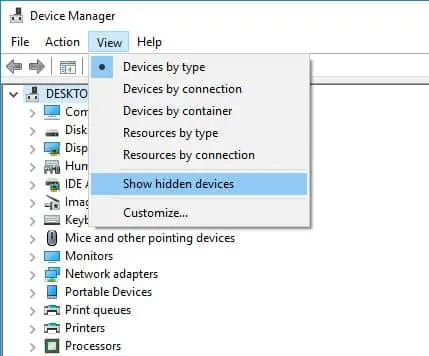

- #MICROSOFT BLUETOOTH RADIO WINDOWS 10 DRIVERE HOW TO#
- #MICROSOFT BLUETOOTH RADIO WINDOWS 10 DRIVERE SERIAL NUMBER#
- #MICROSOFT BLUETOOTH RADIO WINDOWS 10 DRIVERE INSTALL#
- #MICROSOFT BLUETOOTH RADIO WINDOWS 10 DRIVERE FREE#
Thoroughly research any product advertised on the sites before you decide to download and install it. Watch out for ads on the sites that may advertise products frequently classified as a PUP (Potentially Unwanted Products). The pages appear to be providing accurate, safe information. Standard Disclaimer: There are links to non-Microsoft websites.


I will keep working with you until it's resolved.
#MICROSOFT BLUETOOTH RADIO WINDOWS 10 DRIVERE FREE#
Feel free to ask back any questions and let us know how it goes. Since you stated you didnt' want any troubleshooting Steps I will wait to provide them until you ask. There are at least nine sets of Troubleshooting Steps for Bluetooth out of which one almost always works. Make sure you have the latest BIOS or UEFI firmware, Chipset, Display (Video), Sound, USB3, Bluetooth, Network and all other drivers, or else download and install the latest now.
#MICROSOFT BLUETOOTH RADIO WINDOWS 10 DRIVERE SERIAL NUMBER#
So Update your Bluetooth Driver from the PC or motherboard maker's Support Downloads web page, using the full model number, Serial Number or Dell Service Tag on sticker.Ĭompare the latest drivers available for download with the ones presently installed in Device Manager reached by right clicking the Start Menu. Most times the generic driver is not the intended driver but only a placeholder we need to replace with the actual device driver. I'm Greg, an installation specialist and 9 year Windows MVP, here to help you. The Bluetooth class installer ( Bthci.dll) assists in installing profile drivers.įor more information about creating and distributing INF files and installing drivers, see Creating an INF File and INF File Sections and Directives.Hi if. All Bluetooth devices are members of the Bluetooth class. For a server-side installation, the INF file specifies a device ID that corresponds to the service GUID created by the installation application. Tp.Privileges.Attributes = SE_PRIVILEGE_ENABLED ĪdjustTokenPrivileges(procToken, FALSE, &tp, sizeof(TOKEN_PRIVILEGES), (PTOKEN_PRIVILEGES) NULL, (PDWORD)NULL)Ī profile driver's INF file contains information about a Bluetooth device for client-side installation. LookupPrivilegeValue(NULL, SE_LOAD_DRIVER_NAME, &luid) OpenProcessToken(GetCurrentProcess(), TOKEN_ADJUST_PRIVILEGES | TOKEN_QUERY, &procToken) Note that the example does not demonstrate error handling.
#MICROSOFT BLUETOOTH RADIO WINDOWS 10 DRIVERE HOW TO#
The following code example demonstrates how to obtain this privilege. Before the application can call this API the application must have the SE_LOAD_DRIVER_NAME security privilege. The installation application must call the user-mode API BluetoothSetLocalServiceInfo. Vendors specify the service GUID in the application and in their device installation INF file. The installation application must communicate with the Bluetooth driver stack to create a service GUID for the functionality to expose. The guidgen.exe tool provided with the Microsoft Windows SDK can be used to create custom GUIDs.Ī user-mode installation application must be written to expose computer functionality that remote Bluetooth devices can use. The Bluetooth driver stack supports service GUIDs as defined by the Bluetooth SIG, as well as custom GUIDs (that is, GUIDs that are not defined by the Bluetooth SIG). If the Found New Hardware Wizard does not find an appropriate driver for the device, it prompts the user to insert the profile driver installation media that contains the profile driver's device setup information file (INF file). The Found New Hardware Wizard searches for appropriate drivers on the local hard disk drive, and on Windows Update. The local radio issues an SDP inquiry to identify the services supported on the remote device. This may or may not involve a PIN exchange. Select Add a Bluetooth device in Control Panel to find all devices within range of the computer. Installing a client-side profile driverĪ user that wants to use a Bluetooth-enabled device will bring the device within range of the computer and initiate a connection from the computer to the remote device using the following installation sequence for a client-side profile driver. These two installation types require different installation procedures. For example, a vendor could author a server-side installation to enable a mobile device to print to a printer attached to the computer. Server-side installation where the computer advertises services and remote devices can connect to the computer to use those services. Examples include: mice, keyboards, and printers. There are two installation types for Bluetooth profile drivers:Ĭlient-side installation for remote devices where the remote device advertises its services and the computer connects to it. If you are a customer experiencing Bluetooth device installation issues see Pair a Bluetooth device in Windows


 0 kommentar(er)
0 kommentar(er)
